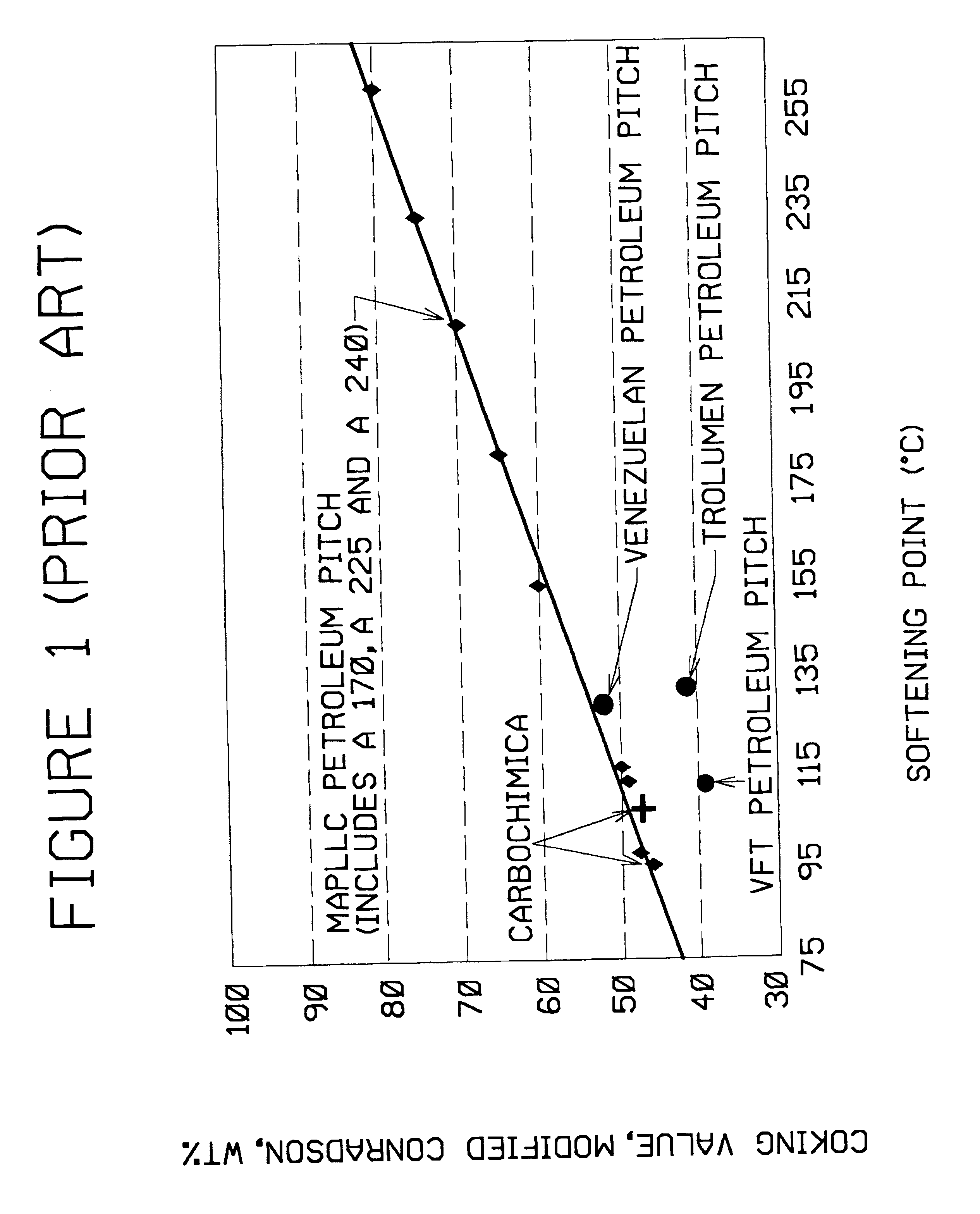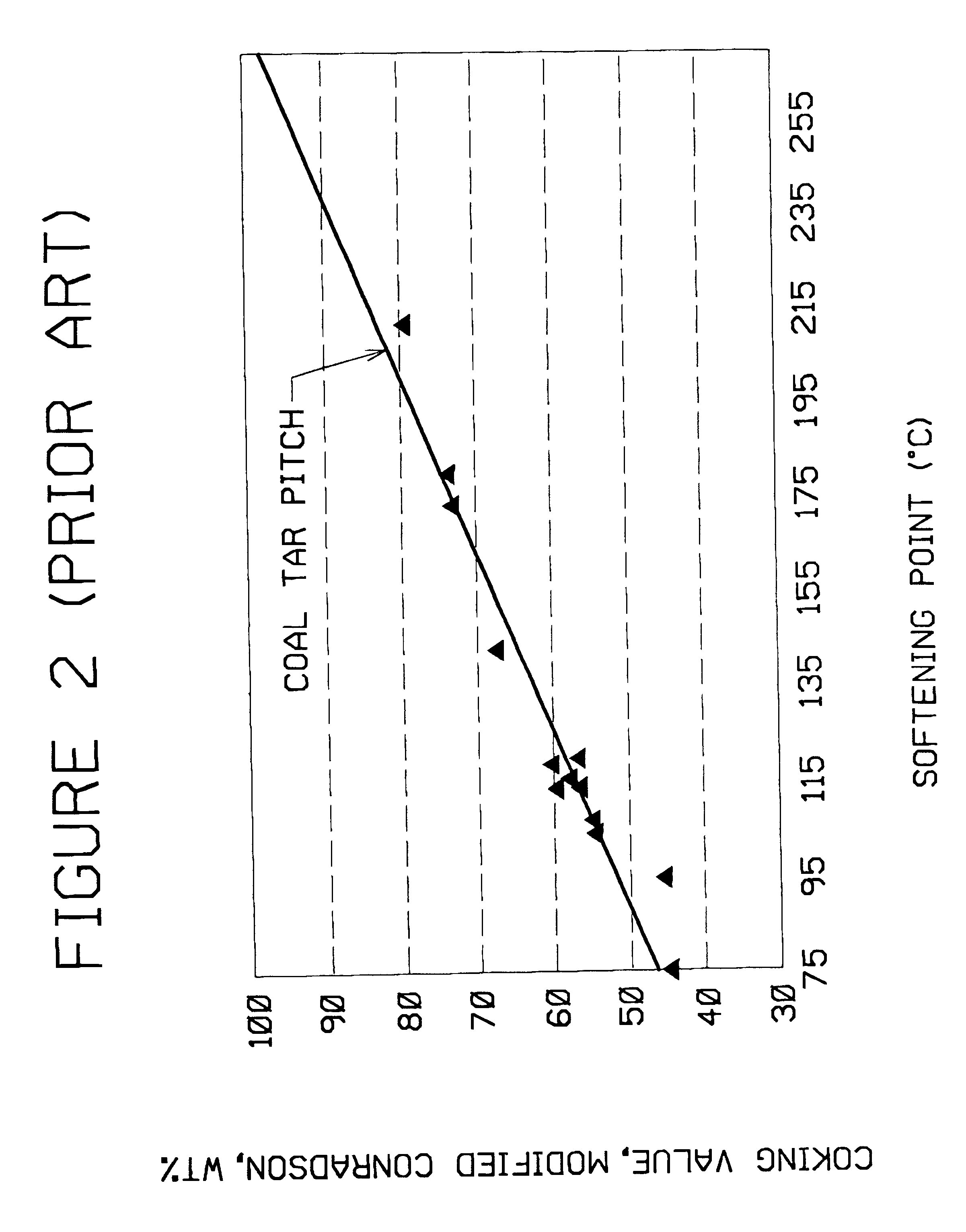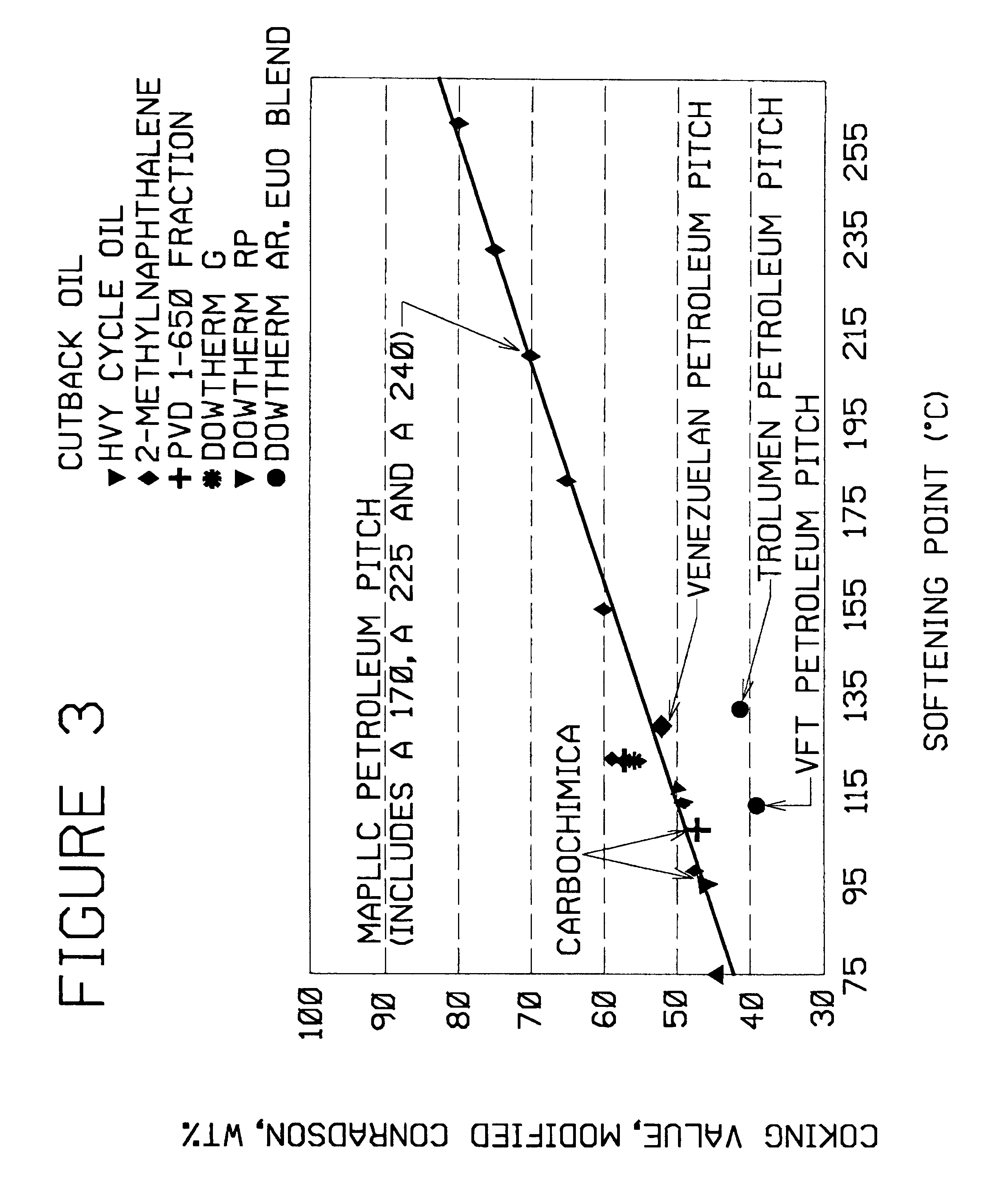High coking value pitch
a coking value and pitch technology, applied in the field of high coking value pitch, can solve the problems of not being able to use for that purpose, not being able to change the coking value softening point relationship, and not being able to improve the coking value of either, so as to increase the coking value of pitch, reduce the softening point, and maintain the softening point constant
- Summary
- Abstract
- Description
- Claims
- Application Information
AI Technical Summary
Benefits of technology
Problems solved by technology
Method used
Image
Examples
example 1 (
Example 1 and FIG. 1 (Prior Art) is a collection of coking values v. softening point for petroleum pitch.
example 2 (
Example 2 and FIG. 2 (Prior Art) is a collection of coking values v. softening point for coal tar pitch. The curve is similar to that for petroleum pitch but at every point the coking value of coal tar pitch is significantly higher than the coking value of petroleum pitch. The slopes are similar, but the coal tar pitch always has a higher coking value.
The Example 1 and Example 2 information are well known and all acceptable pitch products produced today can fit on one or the other of these graphs. The VFT and Trolumen petroleum pitch do not fall on the petroleum curve but these petroleum pitches are considered inferior to A240 from Marathon Ashland Petroleum LLC.
Blends of the two types of pitch (coal tar and petroleum) will produce a blended pitch with properties roughly equal to what would be expected from linear extrapolation.
We wanted to devise a way to break free from the constraints of the curves shown in FIG. 1 and FIG. 2. The key was "peak" processing...
example 3 (
Invention)
In these examples we took various commercially available, high softening pitch samples which had already been treated (with heat in a WFE) to produce specialty pitches with coking values of 60 wt % and above. These materials were diluted with various solvents. The data are reported in Table II, below, and in FIG. 3, which graphically reports the Table II data on the FIG. 1 data (for petroleum pitch).
To make a "green" pitch for use in Canada or other environmentally sensitive areas, exclude the PVO, IBP-650.degree. F. fraction and 2-methylnaphthalene. In comparison with coal tar pitch, A240 is already "green". However, the distillation process used to make the high softening point / coking value pitch removes more of the PAHs by distillation.
In the case where this concept is applied to coal tar pitch, reduction of PAHs will occur as well and replacement of the "bad" PAHs with other petroleum based compounds should improve the coal tar pitch from the environmental standpoint.
PUM
 Login to View More
Login to View More Abstract
Description
Claims
Application Information
 Login to View More
Login to View More - R&D
- Intellectual Property
- Life Sciences
- Materials
- Tech Scout
- Unparalleled Data Quality
- Higher Quality Content
- 60% Fewer Hallucinations
Browse by: Latest US Patents, China's latest patents, Technical Efficacy Thesaurus, Application Domain, Technology Topic, Popular Technical Reports.
© 2025 PatSnap. All rights reserved.Legal|Privacy policy|Modern Slavery Act Transparency Statement|Sitemap|About US| Contact US: help@patsnap.com



